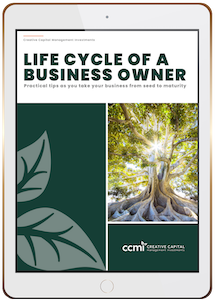Did you know that 59 percent of working-age Americans have no retirement savings at all according to a 2018 report from the National Institute on Retirement Security? Specifically, in California, a 2019 report from the UC Berkeley Labor Center found half of the state’s private sector workers have no retirement assets, and over 60 percent of private sector workers lack access to a workplace retirement plan. In response to these statistics, many states are launching “state-run” retirement programs. The California program, CalSavers, was launched in November 2018 and is a state-mandated automatic Roth IRA program. California employers with five or more W-2 employees have a mandate to enroll their employees in this program if they do not already offer a workplace savings plan, and there are penalties for non-compliance.

CalSavers’ Automatic Roth IRA Program—How it Works
- Minimum Requirements:
- Employees must be age 18
- All employees are automatically enrolled in CalSavers after 30 days unless they opt out of the program
- After-tax Contributions:
- Contribution rate of 5 percent of pay
- Contributions automatically escalate 1 percent per year to a maximum of 8 percent
Employees may choose to elect a different contribution rate, elect out of auto-escalation, or completely opt-out of the program.
The idea behind CalSavers is for employees to “set it and forget it,” since the onus is on them to opt out (and studies show most do not).
CalSavers—Employer Requirements
- Every California employer must help facilitate their employees’ enrollment in CalSavers if it does not have a retirement plan already in place—depending on its number of W-2 employees. Deadlines based on company size are detailed further down.
- Employers that maintain employer-sponsored retirement plans for the benefit of their employees are exempt from CalSavers. These retirement plans include profit-sharing plans, 401(k) plans, pension plans, 403(a) and 403(b) plans, arrangements under Section 457(b), Simplified Employer Plans (SEPs), SIMPLE Plans, and payroll deduction IRAs, as well as union multiemployer pension plans.
- While government employers are exempt from complying with CalSavers, non-profit employers must comply.
- Employers may need to inform CalSavers of their exemption if they do not voluntarily register for the program.
What must employers do after enrollment in CalSavers?
Employers:
- Are responsible for automatically enrolling each eligible participant in CalSavers
- Are responsible for tracking opt-outs, gathering opt-out data each pay period
- Must remit contributions (possibly with payroll company support)
It should be noted that employers are limited in their ability to save with CalSavers and they are not able to fund employer contributions to their employees’ accounts.
What are employees’ responsibilities after being automatically enrolled?
Employees:
- Must opt out, change investment options, change deferral rates, or re-enroll
- Are responsible for monitoring current Roth IRA contribution limits (2020 limits of $6,000 or $7,000 for age 50 or older)
- Should be mindful that Roth-modified adjusted gross income limits and limits on being a highly compensated employee apply
- Choose investments from listed funds, including target date, money market, bond, global, and sustainable balanced funds
- Should be aware of estimated fees depending on the investments; the state retains 0.05 percent
- Are obligated to pay attention to the Open Enrollment period
- Open Enrollment occurs once every two years; employees who previously opted out will be automatically re-enrolled and must actively opt out again if they do not want to participate.
What are the CalSavers’ mandatory registration deadlines based on employers’ number of W-2 employees, and are there penalties?
Deadlines:
- September 30, 2020: 100+ employees
- June 30, 2021: 50–99 employees
- June 30, 2022: 5–49 employees
Penalties:
- Employers may face financial penalties each year for not complying.
- Following a failure notification from the state of California, fines are $250 per eligible employee after 90 days, and increase up to $500 per eligible employee after 180 days.
How do the SECURE and CARES acts incentivize employers to start an employer savings plan (as an alternative to facilitating CalSavers)?
The passage of the Setting Every Community Up for Retirement Enhancement (SECURE) Act on December 20, 2019 provides incentives for employer savings plans, including:
- An increase in the tax credit that small business owners with fewer than 100 employees can receive for startup costs involved when establishing a retirement plan
- A new auto enrollment tax credit for plans
- An extension of time to adopt a plan (documents must now be signed by the due date of the employer’s tax return rather than by the last day of the plan year)
- The introduction of Pooled Employer Plans (PEPs), which allow unconnected small employers to join together in the same overall 401(k) plan, with the intent to lower individual plan costs
The Coronavirus Aid, Relief and Economic Security (CARES) Act, signed into law on March 27, 2020, also provides incentives for employer savings plans, including:
- A delay on the deadline for single employer funding of a defined benefit, cash balance, and money purchase pension plan (the due date for contributions due in 2020 is now January 1, 2021, with interest applied from the original due date)
- An extension on the tax filing deadline to July 15, allowing more time to make deductible contributions
There are certain intricacies to employer plan savings plans that can result in meaningful tax consequences. Employers in California should consult with their CPAs and business consultants to determine if the business is currently exempt from participating in CalSavers. We encourage getting more information from a professional before choosing to facilitate enrollment in the program. CCMI can also refer you to a third-party administrator who can help determine your options and what retirement plan might be best for your business. We would like to note that it can take some time to set up new employer savings plans, so please do not hesitate to contact CCMI if you would like to learn more.
CCMI provides personalized fee-only financial planning and investment management services to business owners, professionals, individuals and families in San Diego and throughout the country. CCMI has a team of CERTIFIED FINANCIAL PLANNERTM professionals who act as fiduciaries, which means our clients’ interests always come first.
How can we help you?





